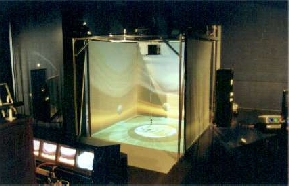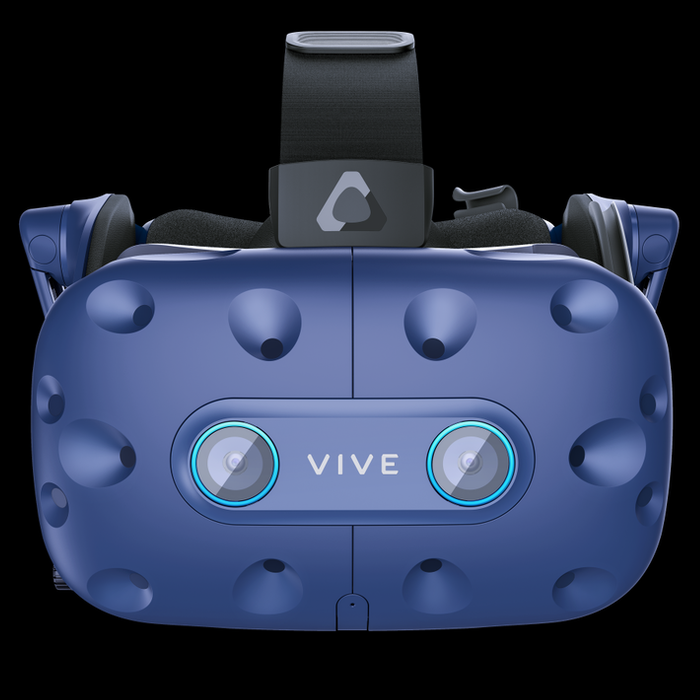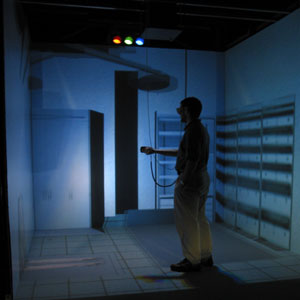| Immersive Virtual Reality |
|
Our development team has an extended expertise in immersive or
non-immersive virtual reality, whatever your environment is. We have
many years of experience in the area of immersive environments in both
a development context and in a day-to-day regular use. For example,
we were the first, in the area of commercial scientific visualization,
to offer 3D stereo display on workstations, and to implement our
software in virtual reality immersive environments. We also
designed an animation for a large public at the science building
of Expo-Québec
twice.
The use of modern PC computers and graphics cards makes the cost of
virtual reality very accessible. We offer consulting services in
virtual reality to help you use immersion environnements well adapted
to your needs.
- installation of complete immersion systems with a PC cluster using
the Linux operating system and open source software,
- development of applications and animations in immersive or
non-immersive mode, in a scientific or entertainment context,
- development of interfaces for components used in an immersive
environnement (3D stereo glasses, wand, glove, stylus, etc.),
- adding specialized features to our
software VUVR.
Two types of hardware for immersive virtual reality are popular:
- The first one is the immersion vault called the CAVE
(Cave
Automatic Virtual Environment). This 3D visualization devices
produce virtual reality immersive environments in which two
virtual images of a three-dimensional scene are generated, one for
the left eye and one for the right eye. These are sent to a
projector which displays them alternately from the back of the
screen(s). Stereoscopic glasses allow the user to perceive a 3D
image from the two stereo images. The participant's position and
orientation in the space are continuously updated by a tracking
system.
- The second type of hardware is the Head Mounted Display (HMD)
(e.g. HTC Vive) which operates along the same principles however
sending the images on two mini-screens positioned near both eyes
of the participant. The HMD is usually linked to the graphic card
of a single PC.
This information is sent to the cluster of computers which generates
the projected images; it recalculates the projected images and
produces a new rendering based on the users's perspective and on the
commands entered by the user. Graphic objects can be moved using a 3D
mouse or gloves, devices that are also connected to the tracking
system.
 |
 |
 |
Representation of a CAVE |
|
HTC Vive Pro HMD |
|



